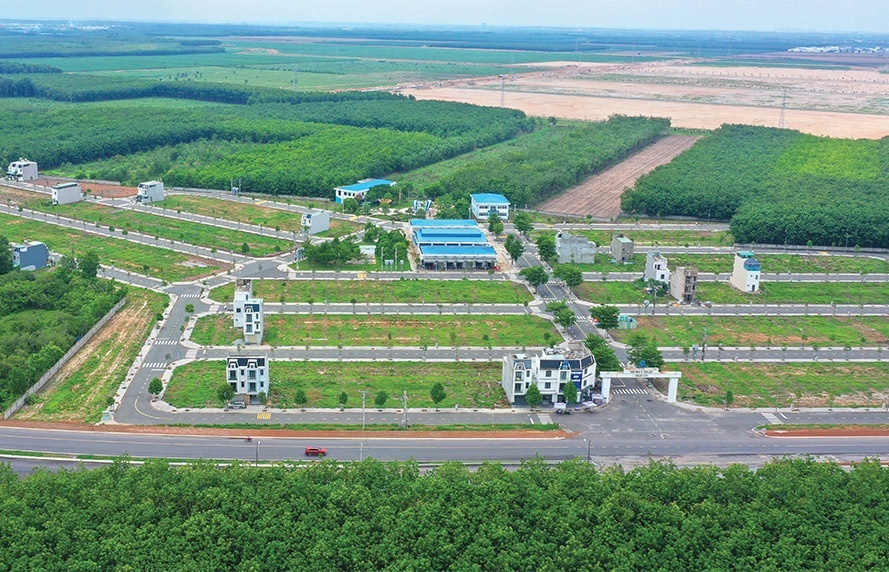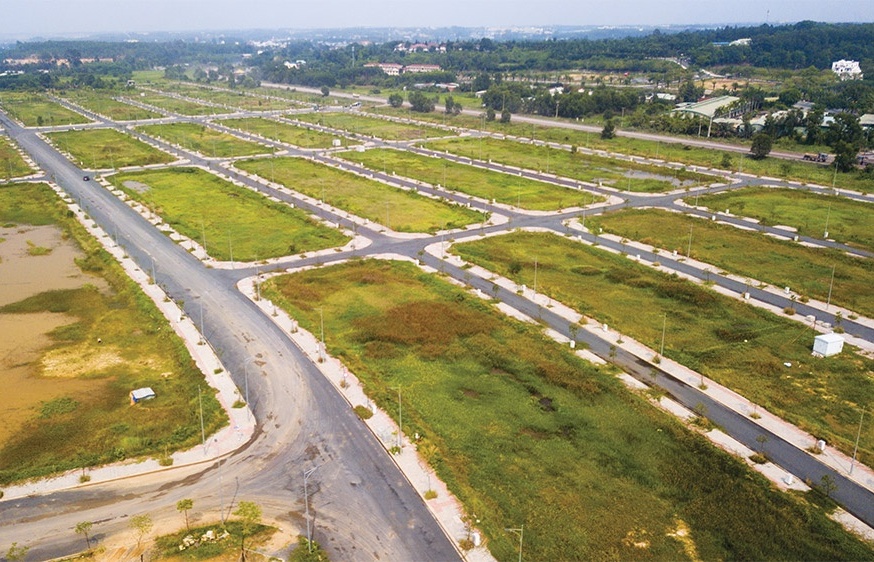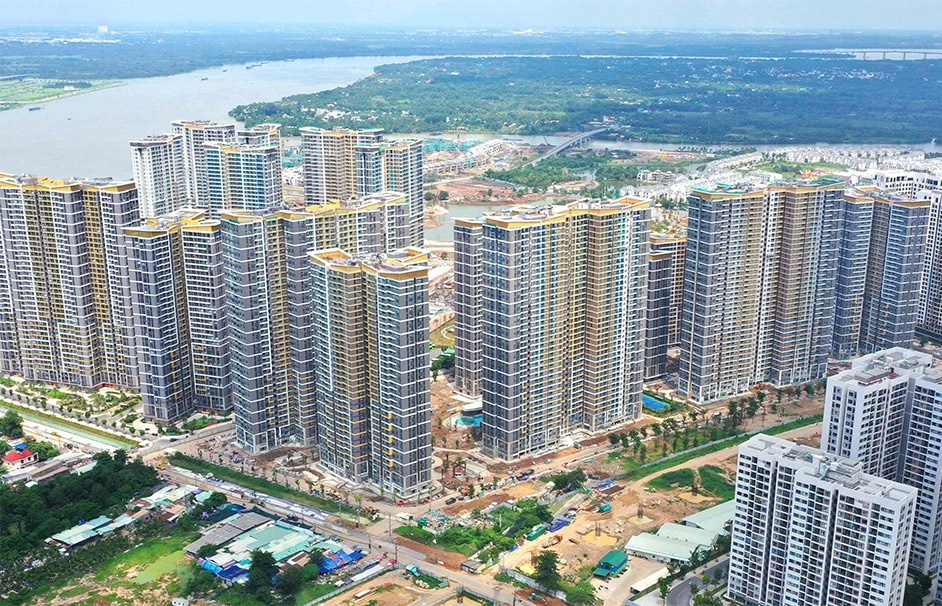Rescue package to help a property market all at sea

Buyers’ confidence is key to unlocking the dormant property market Photo: Le Toan
Vietnam’s real estate market has experienced a standstill over the past two years, which is considered as a reason causing non-performing loan problem at local banks currently and having negative impact on the economic growth.
According the latest report from the Ministry of Construction total value of unsold houses and apartments was been estimated at around VND125 trillion ($6 billion) till March 2013, and there were about 34,000 apartments, 15,300 houses, and 9.8 million square meters of land unsold in 55 provinces and cities.
On January 7, 2013, the government promulgated Resolution 02/NQ-CP including a group of measures which aimed at easing difficulties for enterprises and encouraging local consumption in many sectors, including property market.
Some of the measures have been implemented so far. Just one month ago, the Ministry of Construction issued the Circular 07/2013/TT-BXD detailing who will receive financial support from the government for buying and developing social housing.
The State Bank has also issued the Circular 11/2013/TT-NHNN specifically regulating government’s subsidiary for homebuyers purchasing social-housing. The interest rate subsidiary will last within 10 years, and the annual interest rate will be 6 per cent this year and then below. According to the State Bank, the subsidiary package is worth VND30 trillion ($1.4 billion) which has been disbursed from June 1, 2013 for three years.
Right now, the National Assembly is also discussing to approve the amendment to Law on Corporate Income Tax, value-added tax and other measures to reach socio-economic development targets in 2013, that will also include some incentives for property developers.
But whether these policies would help recover the property market remains an open question that was hotly discussed at the seminar “Revitalising Vietnam’s Property Market” held in Ho Chi Minh City last week.
Dang Huy Dong, Deputy Minister of Planning and Investment, said the world’s economy remained shaky with innumerable latent risks in 2013. Domestically, alongside some achievements multiple hardships persisted, having negative impacts on the real estate market.
“Relevant ministries, state agencies and local governments have proven proactive in handling Resolution 02 over the past months. However, the property market has yet to get out of the woods and difficulties still exist which were shown in imbalanced supply and demand, high inventory and unpaid capital amounts casting bad impacts on the economy,” Dong said.
Dang Hung Vo, former Deputy Minister of Natural Resources and Environment, turned down the idea that Resolution 02 was for rescuing the property market and property investors.
“It is wrong to say so. We should see that this is the State’s necessary interference into the market, in which a great part of the policy is focused on helping low-income labourers have houses. The resolution is centred not only on supporting enterprises, but also helping solve difficulties for the whole economy,” Vo said.
Whilst many experts argued that the $1.4 billion credit package would not help reduce the huge stockpile of apartments and houses, others such as Tran Le Khanh, chairman of the Kien A Corp, believed the package would be surely to have a good impact to the real estate market in the coming time.
“Even though this package focuses only on the low and mid-range product but it still has contagion influences in the whole market. This is because the real estate market has different segments but they have been closely connected each others,” Khanh said.
Nguyen Viet Manh, head of the State Bank’s Credit Department, stressed that the package had an active impact to the market, especially existing loans.
“Due to the decrease of interest from banks, developers now can adjust their price to be more affordable and their products become more attractive to customers,” Manh said.
“This package is not a rescue boat for the market, but it is a fundamental basement for the mid-range segment first, then expanded to other segments,” Manh said.
He said the package was a drastic measure that helped prop up the low-cost housing segment. “There was high demand for housing among low-income earners, especially those in urban areas, but low supplies. The revived low-cost housing segment was expected to lead a spillover affect on other property segments,” he added.
Nguyen Tran Nam, Deputy Minister of Construction, said the $1.4 billion credit package was not aimed at rescuing the real estate market, but reinvigorating part of the market – namely social housing and low-cost housing segment – that would help ignite other segments.
Owing to the government’s support in social housing developers, an increasing number of developers are venturing into this segment, leading to a boom in construction of low-cost housing.
Nam said the ministry had urged localities to scale up construction of social housing projects and to date there had been a total 157 social housing projects in the pipeline across the country designed with 68,500 apartments at development cost of $957 million.
Nam added that the market in Hanoi and Ho Chi Minh City had also seen an increasing number of transactions of apartments, particularly low-priced and small apartments. “Affordable housing segment in Hanoi and Ho Chi Minh City has been warming up recently,” he said.
However, Chris Brown, country manager of Cushman & Wakefield, said there would be no quick fix or “silver bullet” to recover the market. Recent measures could prolong the agony and average recovery period should be six years.
“Sentiment is key to recovery. With the recent measures bring back confidence quick enough to stimulate market recovery, market needs to deleverage as soon as possible,” Brown said.
He said the market would not recover until non-performing loans (NPLs) were recycled at a price low enough to create widespread confidence.
Participants at the seminar also mentioned to the establishment of the Vietnam Asset Management Company (VAMC) which will be effective from July 9, 2013. With the chartered capital of VND500 billion ($25 million) the company will be operated under the direct control of the State Bank.
Manh said the establishment of VAMC would be supportive to the market. “Bankers can not solve bad debts by themselves and this problem must be co-addressed by different sectors, including the State, banks, developers and even buyers as well,” Manh said.
Brown said that the establishment of VAMC was a positive move, however, its budget was still limited. “Banks are not required to disclose their NPLs. Poorly managed banks will take advantage to transfer their NPLs to VAMC instead of deleveraging. NPLs are not attractive to investors at book value when reality is they have decreased by from 30 to 40 per cent,” Brown said.
What the stars mean:
★ Poor ★ ★ Promising ★★★ Good ★★★★ Very good ★★★★★ Exceptional
Latest News
More News
- Trump's trade policies could shape Vietnam's economic outlook: Dragon Capital (November 15, 2024 | 16:56)
- The One Destination partners with Singapore investor and institutional fund to build ESG real estate complex (November 11, 2024 | 10:32)
- Stabilising measures must sit alongside land price hikes (November 07, 2024 | 09:56)
- CapitaLand Development records strong bookings for Orchard Hill (November 07, 2024 | 08:19)
- Public transport and real estate: The rise of Transit Oriented Development (November 05, 2024 | 15:06)
- Funding flows to second-tier localities (November 03, 2024 | 15:24)
- Hanoi has long road to travel in becoming a smart city (November 03, 2024 | 15:00)
- Nam Long Group hands over keys to Akari City Phase 2 (October 30, 2024 | 18:29)
- KTG Industrial expands industrial footprint at Taitronics 2024 (October 29, 2024 | 14:46)
- Deal signed for sustainable development at Prodezi Eco-Industrial Park (October 26, 2024 | 10:02)



















 Mobile Version
Mobile Version